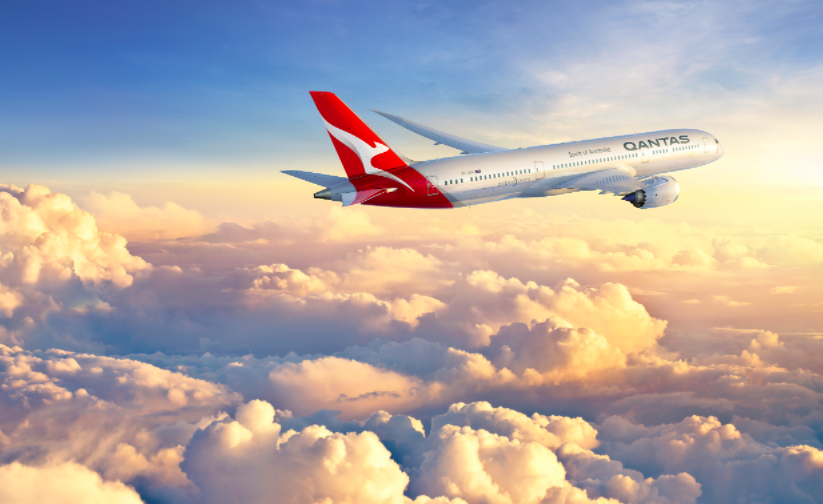London to Sydney non-stop flights could be possible by 2022
Qantas moots connection between the biggest cities in Europe and Australia, but only if the price is right

As the fare for its first non-stop flight between the UK and Australia rises towards £2,000 return, Qantas is contemplating pushing the boundaries even further – and seriously considering connections from London to Melbourne and Sydney.
Since the Australian airline announced a non-stop link between Heathrow and Perth, demand for the 17-hour flight has proved strong.
A few seats are available for the first outbound departure from London next year on 25 March, but round-trip economy fares are approaching £2,000.
What has caught the particular attention of Qantas executives is the demand for more comfortable seats on the 9,009-mile trip. Premium Economy is selling strongly at over £3,000 return, while Business Class is currently priced at over £6,500.
Much cheaper deals are available on connecting services, which suggests that well-heeled passengers will pay a substantial premium for cutting out the en-route stop, which adds a minimum of two hours to the overall journey.
The distance from London to Sydney is 10,557 miles, with Melbourne around 60 miles closer. At present the quickest London-Sydney trip is around 22 hours and 30 minutes, on Emirates or Qantas via Dubai, or Thai via Bangkok. The non-stop service would take around 20 hours.
The most direct route from London initially heads east-north-east over Denmark, Sweden and Estonia, and spends most of the journey overflying Russia, Kazakhstan and China. It then crosses the South China Sea, the Philippines archipelago and eastern Indonesia before making landfall near Darwin.
The two big aircraft manufacturers, Airbus and Boeing, are developing competing aircraft that could operate such routes: the A350ULR [Ultra Long Range] and 777-8 respectively. The world’s longest flight at present, the 9,025 miles between Doha and Auckland, uses an earlier version of the Boeing 777.
The Qantas chief executive, Alan Joyce, told Reuters: “These aircraft, we think, are potentially real goers on these routes.” He said such a service could begin by 2022.
The most important of the three key issues for the Australian airline is the price of oil. On ultra-long-haul flights, a lot of kerosene is burned in order to carry fuel for later stages of the journey — so increases in the price of fuel disproportionately damage the profitability of extreme routes.
Secondly, how much of a premium will passengers tolerate for the privilege of cutting out the stops? Fares between the UK and Australia are currently depressed by intense competition. Even booking on the day of travel, a return flight from Heathrow via the Far East to Sydney is on sale for as little as £800 return, the same fare as prevailed 40 years ago.
The third factor: the “weight penalty” that Qantas would incur, particularly flying west into the prevailing headwind. When aircraft are close to the limit of their range, the airlines will typically reduce the number of seats sold in order to reduce the risk of making an en-route refuelling stop.
“Both the A350-900URL and 777-8 can trade passengers for fuel to fly longer,” said Bjorn Ferhm of the specialist aviation publisher Leeham News and Comment.
“The question is not if it’s possible. It’s about how many passengers can be carried for the two jets and if it’s economic at the seat count.”
Victoria Moores, the European editor of Air Transport World, said: “There is definitely a desire for non-stop flights, but there’s also a desire for the cheapest fare possible. It’s always a trade-off and what people say they want is often very different to how they behave in practice. Direct at a competitive price? Yes. Direct at a premium? There will be a market, but I’m not sure how large that market will be and whether it will be enough to sustain the route.”
The aviation consultant, John Strickland, echoed that sentiment: “The non stop would appeal to the relatively small premium market but due to the need to still sell economy seats, would not be likely to be as profitable as other potential uses of the aircraft.”
The non-stop distance from Sydney to New York is 9,940 miles, over an hour shorter than the London-Sydney route. In addition, the average fares on trans-Pacific flights from the US to Australia are significantly higher than from the UK.
But Malcolm Ginsberg, editor-in-chief of Business Travel News, said: “Maybe it is England’s long connection with ‘Down Under’ and Amy Johnson’s historic flight but there has always been something special with London-Sydney.
“There is a premium to be paid. Long-range fuel tanks, special loos with extra capacity, at least a double crew. But there are advantages. No intermediate landings which can be expensive, and not just airport fees. Aircraft are serviced every so many rotations. Cut them down by half and there has to be a saving.”
A Qantas Boeing 747 flew non-stop from Heathrow to Sydney in 1989, but as a proving flight with no paying passengers. Jonny Goodall, commercial director of Travel Nation, said: “Undoubtedly Sydney is the headline act when it comes to Australia.
“The vast majority of our customers prefer a stopover or two to break the journey to Sydney, but I also think demand will be there for Heathrow-Sydney non-stop as it would be unique.”
Subscribe to Independent Premium to bookmark this article
Want to bookmark your favourite articles and stories to read or reference later? Start your Independent Premium subscription today.

Join our commenting forum
Join thought-provoking conversations, follow other Independent readers and see their replies